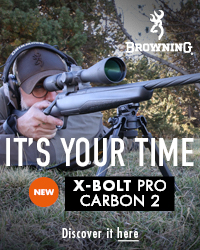Dr Simon Lee considers how much gun is too much gun and submits an application for a variation to his Firearms Certificate for a .338 Lapua Magnum.
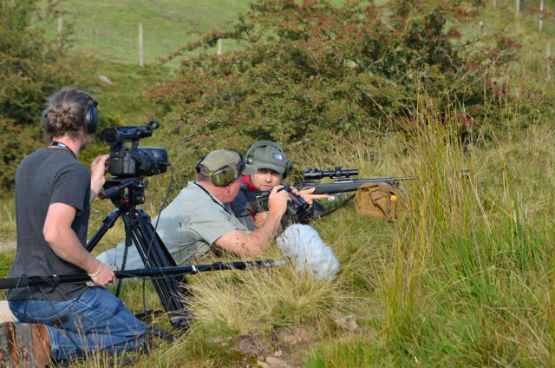
(Above: 'Long Range Shooting' to watch the film follow the link at the bottom of this page)
In this article we look at the need for larger calibres and the problems, perceptions, and methods of acquiring them.
'Use the right tool for the job', this piece of irrefutable wisdom is as old as tools themselves. When it comes to shooting and particularly stalking and hunting live quarry, this genuinely applies. Robert Ruark, with many years of African experience behind him, urged us to 'use enough gun'. So how much gun is enough?
Legally, a minimum of .240 calibre with 1700ft/ps and a 100gr bullet is the starting point to be able to stalk all species of deer throughout the UK. Each estate will have it’s own rules and some Scottish estates will only accept a minimum calibre of .270 for use on Red deer. Wild boar in the UK are also a thorny subject, with a minimum of .270 recommended by guidelines, despite the species dubious legal status.
Those lucky enough to travel overseas to Europe may need calibres with greater range for mountain hunting, whereas Africa will require larger calibres for dangerous game, the H&H .375 is arguably the classic hunting rifle, often fitted with iron sights instead of the usual telescopic sight, suggested distance to target is going to be far shorter.
Back to the UK, the two box standard calibres of .243 and .308 will assuredly put all six species of UK deer, plus boar, wild goat, and fox down instantly if shot placement is correct.
Let's talk about ammunition. When describing ammunition to lay persons I use the snack/size metaphor, shotguns throw a handful of lentils, air rifles spit out peas and rifles hurl nuts from Peanuts to Brazils.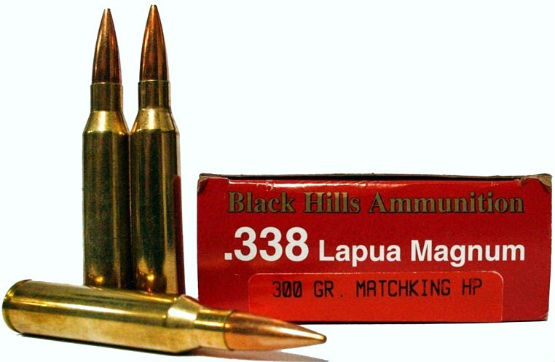
How far do we want to throw the nut? Generally speaking, most shots taken in woodland stalking are under 100m, and often far less, but it’s a different story in the highlands of Scotland where topography, a myriad of eyes, and unpredictable wind may make shots out to 250m plus a reality.
Purists, and here I don't wish to cause further schism in an already fractured sport, would argue that stalking means 'getting in close to the quarry with improved fieldcraft skills'. When the longer shot does need to be taken, the balancing factors of an ethical shot and 'fire at 300, fix at 400' thinking both apply.
Taking a visit to WMS Firearms Training in Wales, to see the Gandalf of Guns, Andrew Venables, is an eye opener in terms of what is possible and what your equipment setup will do. I ventured up there to test a new .308 rifle by Tikka, other budget European rifles are available. . . along with quality, Z6i scopes by Swarovski.
Shots were taken out to 500m in various positions at steel targets that produce a satisfying clang when struck. Despite quality Austrian optics, the first thing to acknowledge in terms of what makes you miss at longer range, is invariably you.
After 300m, I found the life-sized roe target, rusty brown, hard to spot initially, however once in position, prone with a bipod by this point, the vital area of 'grapefruit in a barrel' seemed tiny.
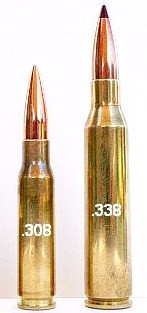 Would I fire at the deer at the same distance in the field? Probably not, but if it has to be taken I would certainly drop down and use the bipod, the slightest twitch or flinch at longer ranges magnifies mistakes to a miss, wild groupings or worse still, a poorly placed shot resulting in a wounded, bolting animal dying in agony.
Would I fire at the deer at the same distance in the field? Probably not, but if it has to be taken I would certainly drop down and use the bipod, the slightest twitch or flinch at longer ranges magnifies mistakes to a miss, wild groupings or worse still, a poorly placed shot resulting in a wounded, bolting animal dying in agony.
(Left the much used .308 compared against the .338 Lapua Magnum. Is this too much for the UK?)
Everyone should have their ethical compass, mine points to 'do as you would be done by', one minute a mouthful of buttercups, the next on the way to the chiller. Talk of meat damage to carcasses may be valid in some circles, but shouldn't be the primary concern when choosing an impact point, enough said.
A major factor in this soup of potential problems is wind, the further you shoot, the more the bullet is affected. Watching the swirl of a falling round is an eye opener, the spiraling blur as is screws its way to target provides fascination in the brief eye blink it takes for a round to reach its target.
Wisdom comes thick and fast from Andrew, a longer shot, e.g. 350m at a live target that doesn't go as planned may require you to take a follow up shot at 400m plus to rectify matters. Ballistic adjustments to your scope may help matters here, but never as quickly as a fleeing animal or your ability to range, adjust and dial in accurately as your quarry vanishes over the horizon. Personally I don't relish longer shots as too much can happen between trigger and contact.
So, should you need to deliver bullets out to longer ranges, what size hammer do you choose to knock them out there and what size nut to go with it? Also how to apply for both on your FAC variation application Form 202?
Initially, the grant of an FAC may be subject to conditions based on your experience, use, and requirement for a firearm. One question frequently asked is what will the new calibre do that your existing one won't? My .308 will comfortably deliver its preferred 168gr round out to 500m on steel targets, but might have lost enough of its energy to enter, expand, and exit to instantly drop an animal in its tracks.
There does exist a certain stigma with large calibre rifles, should you type 'long-distance shooting/hunting' into youtube, you'll be presented with all kinds of dubious records and claims best ignored or treated with a large pinch of salt. I won't elaborate on which side of 'the pond' most of these come from!
So when the time comes to fill out your Form 202, if using your new calibre for game, don't forget to specify expanding ammunition for game or you'll be left with target ammunition options that are no good for live quarry, right hammer, wrong nut.
Those who like to emulate military technology will no doubt see the growth of anti-material calibres such as the .50 calibre and beyond as of use practically. Personally I would struggle to justify my selection here for anything other than long range target shooting and the list of approved ranges in the UK on which to use them doesn't exceed a dozen.
I was looking for a new calibre to meet the needs of dangerous animal hunting overseas, long range target shooting generally, and a calibre that would let me consistently hit steel targets out to 1200m, and chose the .338 Lapua magnum.
Despite the difficulties in finding somewhere to try before you buy, I finally found someone who had the calibre I was looking for but in a different configuration than I would use myself, iron sights and unmoderated.
On private land, I aimed at a target at 200m and released the trigger, this had the effect of punching me in the shoulder, making my ears ring, and disintegrating the paving slab I had aimed at. That experience made applying for a moderator essential for HSE reasons, this too needs to be added to the variation form.
Muzzle brakes are gaining in popularity in some quarters but having been on a range where someone was using one in the lane next to me, I'd rather not. Each pressure created by the discharge of each round parted my hair and knocked over my spotting scope, much to my neighbour's hilarity.
There exists a train of thought in rifle circles that if you can present a clear case for your choices that your FEO agrees with, then it should be yours. At this stage I looked at it from the FEO's perspective, would I be happy issuing a variation to an individual who could then have access to a firearm with accuracy out to 1600m and beyond?
Did my reasons seem legitimate?
Did I have somewhere appropriate to use it?
Did I have rifles of similar calibre and capabilities?
Had my domestic security changed?
What would I be using it for?
With the luxurious advantage of access to a large piece of land in France, and you will need a large piece of land, the .338 calibre is 'too big for Bisley' despite being the National Shooting Centre for the UK, I consider my case for a variation to be justified, but who can tell?
A week after I sent off my completed Form 202 an outrageous terrorist attack took place in Paris with tragic consequences, ripples from across the channel affecting perceptions here in the UK and beyond.
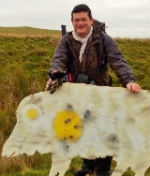 To a layperson, a gun is a gun, despite the huge variety of rifles, and they all fire bullets, and on the subject of ammunition, each round for the .338lm runs to about £4. Can this be justified? Or for that matter, does it open the next can of worms, the question of economically reloading your own?
To a layperson, a gun is a gun, despite the huge variety of rifles, and they all fire bullets, and on the subject of ammunition, each round for the .338lm runs to about £4. Can this be justified? Or for that matter, does it open the next can of worms, the question of economically reloading your own?
(Left: Dr Lee on the range)
To watch our short film ‘Long Range Shooting’ and other films, follow this link to: training-films
Alternatively to read more about calibres then visit our 'rifle calibres' page where you can also watch a short film in which Peter Jones discusses calibres with Freddie Nesbitt from William Evans: rifle-calibres
Finally if you'd like to read about some of the calibre preferences of our readers, then follow this link: what-is-your-favourite-calibre and please email us with your own choice of calibre and the reason, and we'll add your comments to the growing list. email:



